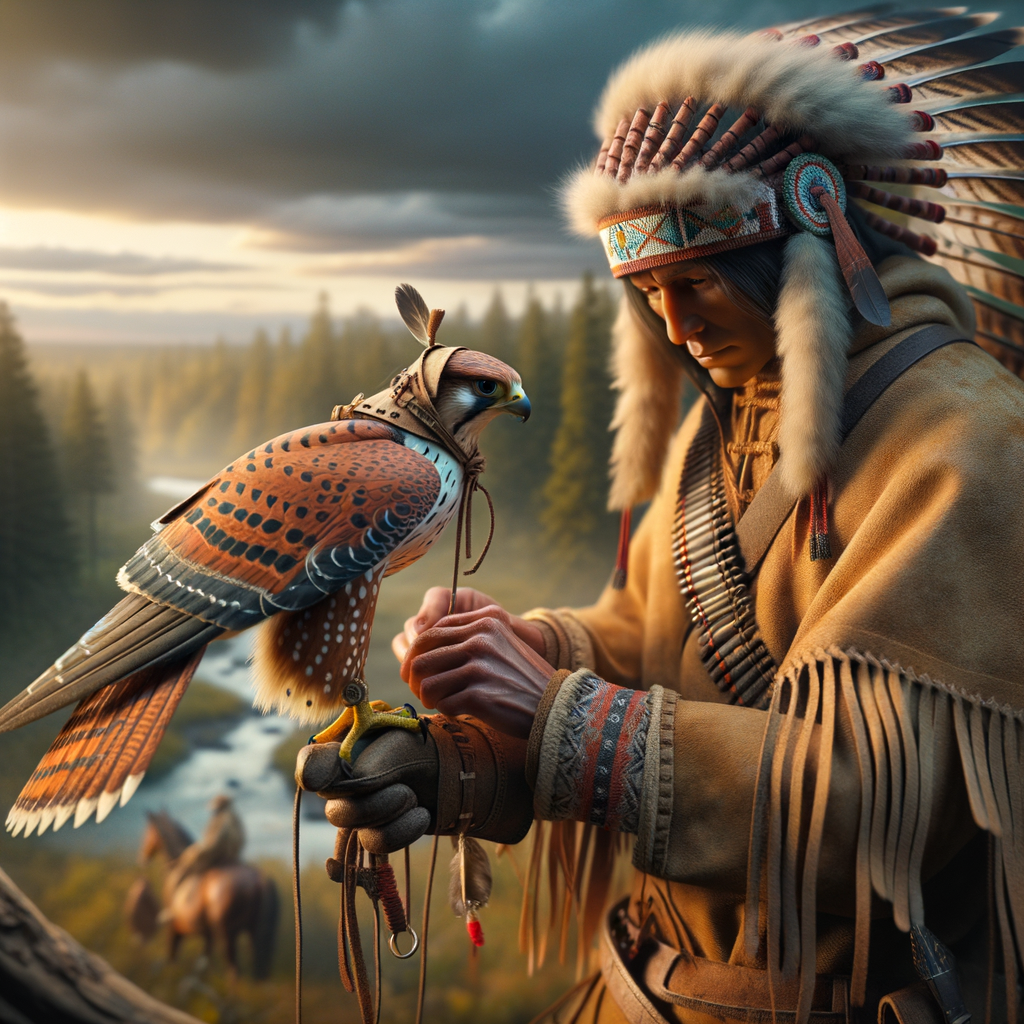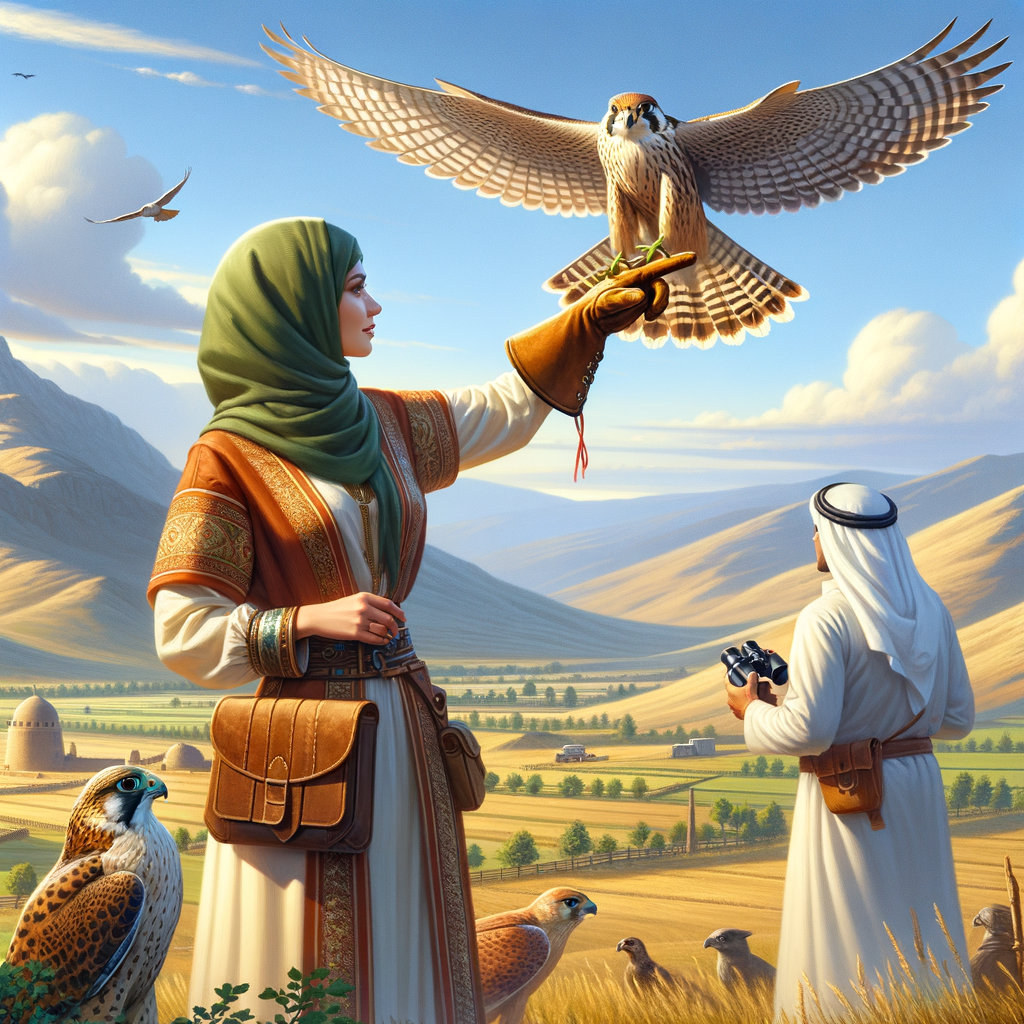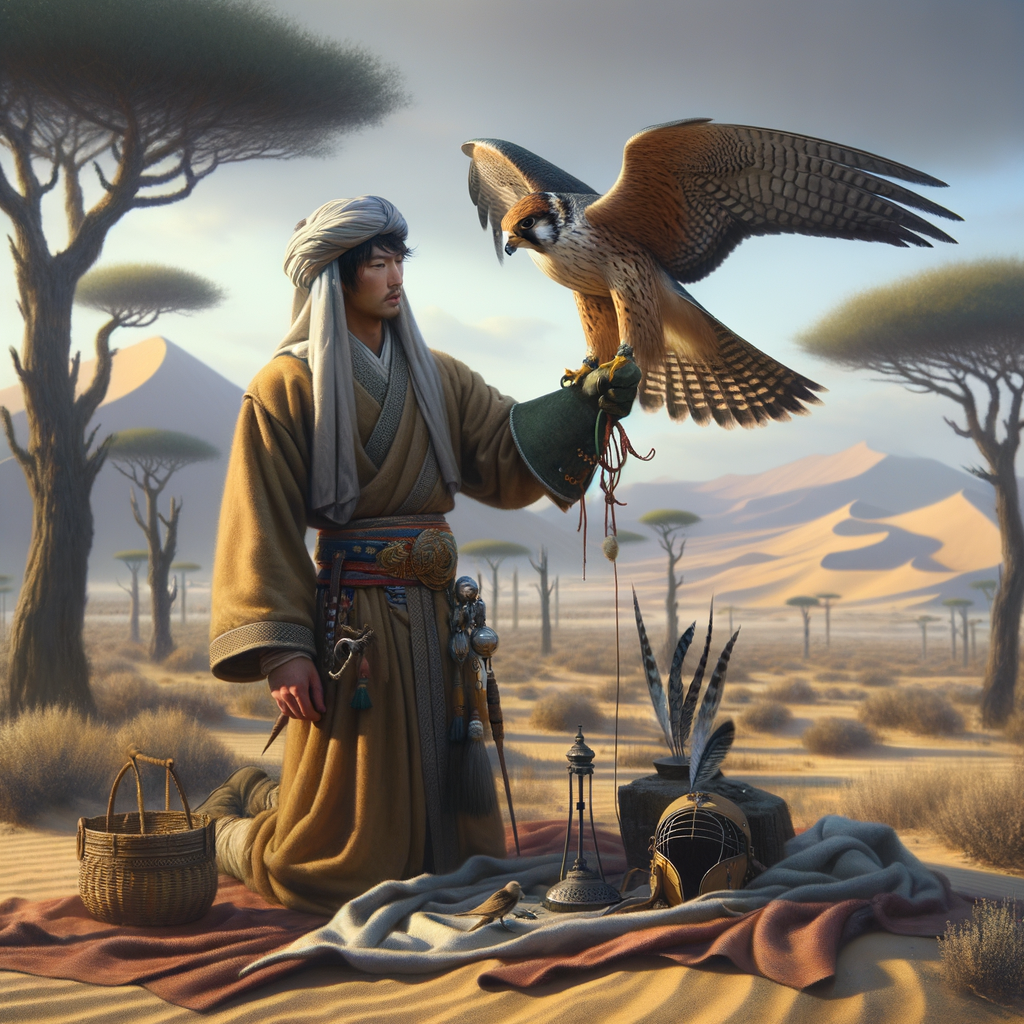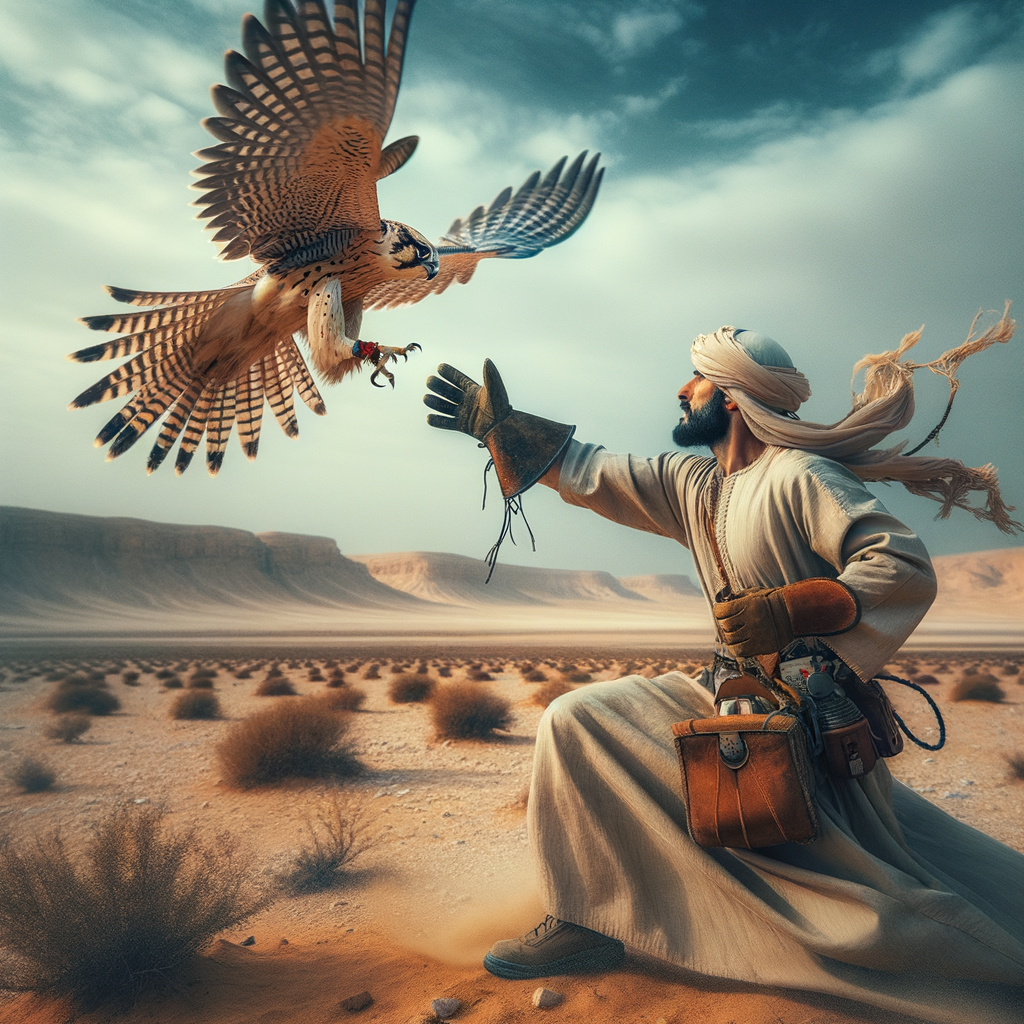Fascinating Insights on Falconry in Native American Culture
- Falconry has held a special place in Native American culture for centuries.
- Birds of prey like falcons and eagles are highly respected and often seen as spiritual symbols.
- The relationship between Native Americans and these birds is based on deep respect and mutual trust.
- Learning falconry involves understanding bird behavior, training techniques, and conservation efforts.
- Falconry skills are traditionally passed down through generations, reflecting the rich heritage of Native American tribes.
- Participation in falconry helps to connect people with nature and fosters a sense of responsibility and care for the environment.
- Falconry also serves as a means of cultural preservation, keeping ancient traditions and knowledge alive for future generations.
Falconry and Native American Culture: Discovering a Timeless Bond
When you think about the rich traditions of Native American culture and the majestic art of falconry, it might seem like we’re talking about two separate worlds. But, hold onto your hats’these two worlds are woven together with threads as strong and colorful as the fabric of Irish folklore!
Imagine this: in Ireland, ancient tales of Celtic warriors and druids include magical birds that guide and protect. Similarly, Native American cultures have their own stories and traditions tied to the mighty birds of prey. These birds, like falcons and eagles, are not just awe-inspiring; they carry deep cultural significance and spiritual meaning. Just as the Irish see wisdom and bravery in their mythical birds, Native Americans see their avian companions as symbols of power, freedom, and vision.
So why should you keep reading? Well, there’s a whole world of fascinating connections to uncover! From the daily practices of falconry to the spiritual and cultural roles these birds play in Native American life, this article promises to take you on an exciting journey through history, tradition, and shared human experience. By understanding these connections, we can better appreciate the delicate art of falconry and the importance of preserving these age-old practices.
Take a seat and prepare to be captivated by the age-old bond between humans and birds, and how it still resonates in today’s world. Think of it as an enchanting, culturally rich story that’s as gripping as a classic Irish legend. Ready to learn more? Let’s dive in!
Falconry and Native American Culture: A Deep Connection
Falconry is the ancient art of training birds of prey to hunt in cooperation with humans. This practice is widespread and has rich traditions across various cultures, including those of Native Americans. Native American falconry, or indigenous falconry, highlights the significant relationship between indigenous people and their environment. Understanding these Native falconry traditions opens a window into the fascinating practices of falconry in the Americas.
Historical Significance of Indigenous Falconry
The use of birds of prey, such as hawks and falcons, in Native American cultures spans centuries. These birds were not only admired for their hunting skills but were also respected as powerful spiritual beings. Indigenous falconry practices varied among different tribes, each with unique methods and purposes. For instance, some tribes trained raptors to assist in hunting small game, while others held these birds in high regard for their symbolic meanings.
Techniques and Methods in Native Falconry Traditions
Native Americans implemented diverse techniques and methods in falconry. Training a raptor involved patience and knowledge of the bird’s behavior. They used basic tools such as hoods and jesses, which are still essential in modern falconry. These techniques provided foundational knowledge passed down through generations, contributing significantly to the art of falconry. Learn more about these historical techniques here.
Spiritual and Cultural Importance
Falconry was more than a hunting method in Native American culture. It held spiritual significance and played a role in cultural rituals and ceremonies. Birds of prey were often associated with the divine and were seen as messengers between the physical world and the spirit world. This reverence is evident in the intricate feather headdresses worn by certain tribal leaders and warriors, symbolizing courage and strength.
Falconry in the Americas: A Shared Heritage
While falconry is a global practice, its application and importance differ across continents. Falconry in the Americas, particularly among Native American tribes, reflects a deep respect for nature and living in harmony with the environment. This heritage underscores the adaptive techniques developed for hunting in various terrains, from plains to dense forests.
Modern Relevance and Revival
Today, there is a renewed interest in Native American falconry. Modern falconers often seek to learn from these ancient practices, merging traditional knowledge with contemporary falconry techniques. This blend has led to a richer understanding and appreciation of the vocation. For those new to the field, understanding these native traditions can provide valuable insights and a deeper connection to this ancient art form. Explore how modern falconers are integrating these techniques.
By studying indigenous falconry and recognizing its cultural significance, we not only preserve these ancient traditions but also honor the wisdom and ingenuity of Native American cultures. This knowledge helps ensure that falconry continues to be a meaningful and respected art, deeply intertwined with nature and human culture.
Exploring Falconry in Native American Culture (2024)
Introduction to Falconry Workshops
The practice of falconry has seeped deep into the traditions of Native American culture. One of the striking examples in 2024 is the North American Falconers Association (NAFA) hosting an “Introduction to Falconry Workshop.” The workshop covers a variety of topics such as:
- Falconry Birds: Learning about native birds of prey like hawks, eagles, and falcons.
- Bird Training: Techniques and approaches to training these majestic birds.
- Hunting Equipment: Detailed understanding of the tools used in falconry.
Regulations and Licensing in Falconry
State and federal regulations play a crucial role in the practice of falconry. Below are some regulatory frameworks from different states:
Utah
- Permits: 17 permits available for peregrine falcon takes, 16 for residents and 1 for non-residents.
- Governing Body: Utah Division of Wildlife Resources.
New York
- Licensing: Requirements include passing an examination, having a current hunting license, and completing a facility and equipment inspection.
- Database: The 3-186A Falconry database tracks falconry actions.
Montana
- Quota Regulation: Biennium regulations include a quota of 10 nestling or fledged falcons for residents and 1 for non-residents.
- Governing Body: Montana Fish, Wildlife, and Parks Commission.
Conservation Efforts
Native American falconers are passionately involved in conservation initiatives:
- Breeding Programs: Ensuring a sustainable population of birds of prey through breeding and releasing.
- Habitat Protection: Efforts to protect and improve the habitats crucial for the survival of these birds.
- Research Support: Backing research projects on species like goshawks and golden eagles.
Cultural Significance
Falconry is more than just a sport; it is a significant cultural heritage for many Native American communities. Some cultural connections include:
- Symbolism: Falcons symbolize strength, independence, and a close connection with nature.
- Spiritual Practices: Falconry is often intertwined with their spiritual practices and ceremonial traditions.
- Generational Teaching: Falconry skills and knowledge are passed down through generations within families and the community.
Workshops and Events
In addition to the workshops, several other events highlight the vibrancy of the falconry community:
- North American Falconers Association (NAFA) Event: Hosting an Introductory Workshop on August 24, 2024, in Huntersville, North Carolina.
- Joint AGM ‘ NAFA Meet: Planned for November 2024, concluding with a final banquet on November 24th.
- Polish Falcons of America: Hosting the 43rd Quadrennial National Convention from July 25’28, 2024, in New Britain, Connecticut.
These organized gatherings provide opportunities for falconers to exchange knowledge, celebrate their shared heritage, and promote conservation efforts.
Conservation and Regulation Overview
Here’s a tabulated summary of select regulations and conservation status across different states:
| State | Permits Available | Special Notes |
|---|---|---|
| Utah | 17 | 16 for residents, 1 for non-residents; managed by Utah Division of Wildlife |
| New York | Varies | Licensing includes exams, hunting license, facility inspections; uses 3-186A Database |
| Montana | 11 | Biennium quota: 10 for residents, 1 for non-residents; managed by Montana Fish, Wildlife and Parks Commission |
Virginia Peregrine Falcons
- Population Monitoring: Virginia Department of Wildlife Resources monitors peregrine falcon populations actively.
- Current Statistics: Around 30-35 breeding pairs in 2024, with numbers increasing annually.
This wealth of information and structure ensures a compelling and insightful journey into the world of Native American falconry, focusing on workshops, regulations, cultural significance, and conservation efforts for 2024.
Honoring Native American Falconry in 2024
Falconry holds a special place in Native American culture, combining the rich traditions of hunting and deep spiritual connections. This ancient practice has been passed down through generations and continues to thrive today. Workshop opportunities, like the one offered by the North American Falconers Association, are instrumental in spreading knowledge about falconry. Regulations and conservation efforts, spearheaded by various state wildlife agencies, ensure the preservation of this culturally significant activity. Furthermore, the involvement of Native American falconers in conservation projects highlights their commitment to maintaining healthy bird populations and protecting natural habitats. Native American falconry not only represents a historical continuum but also showcases an ongoing dedication to nature and cultural heritage.



